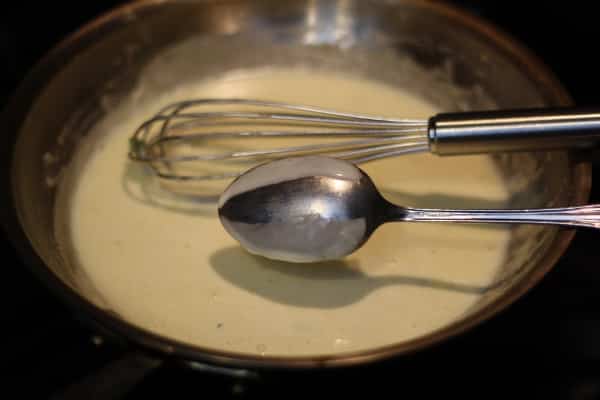Nappe consistency is a French culinary term. It is a term that refers to the consistency of a sauce. Nappe consistency is achieved when the sauce reaches a thickness that allows it to coat the food evenly. It should not be too thick or too thin. How do you know then your sauce has reached the right consistency? Take a spoon, immerse it in the sauce and turn it over with the back of the spoon facing you. Run your index finger down the spoon (see image above). If you end up with a clean line down the middle, your sauce is ready. Some examples of sauces that nappe consistency applies to are: hollandaise, bernaise and bechamel. Nappe consistency basically ensures that your sauce witll have a velvety smooth texture, without any lumps.
The secret to achieving a perfect, silky, nappe consistency lies in two things: constant stirring (always use a metal whisk) and the right temperature. The stirring will prevent the proteins from separating while keeping a silky consistency. The constant temperature will prevent your sauce from thickening and creating "gruel" -for lack a better term.
Different sauces require different cooking temperatures. For example, a traditional cream pan sauce such as the one I make for my steak au poivre recipe should be cooked on medium heat in a stainless steel pan. Do not use teflon, the non-stick surface is not suitable for sauces. Bearnaise and Hollandaise fare better when cooked on low because raw eggs, one of the basic ingredients in both sauces, tend to be temperature sensitive. The last thing you want is for your sauce to appear like a bowl of scrambled eggs. Not visually pleasing!
Finally, if you follow the instructions carefully, you will have good results. Remember nappe consistency boils down to (well not really boils) to two key things: constant temperature and stirring.






Leave a Reply